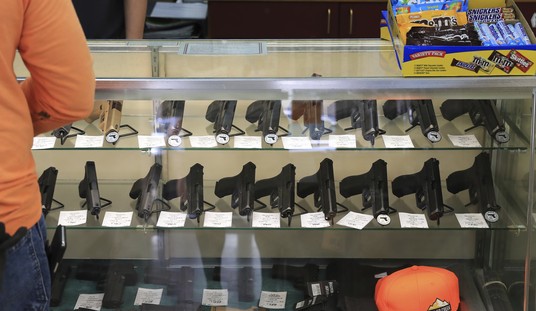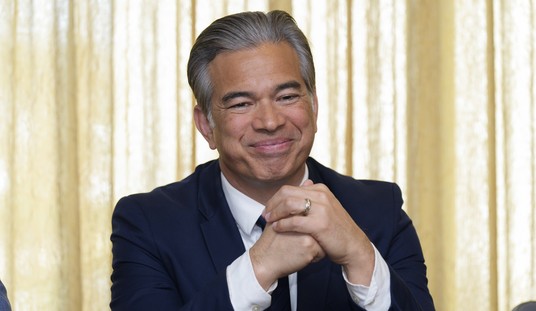[Today, Apr. 19, marks one of the most important anniversaries in our nation’s history. I’ve written about this day over the years. It has always been one the most important days in our nation’s history – I would argue more important than the 4th of July – and it is certainly worth remembering here.]
April is a month chocked-full of American military anniversaries: The Continental Navy captured its first enemy warship in April 1776. Marines captured Tripoli, 1805. The Civil War began, 1861. Lee surrendered to Grant, 1865. The Spanish-American war began, 1898. The U.S. declared war on Germany, 1917. Doolittle raided Japan, 1942. American troops landed on Okinawa, 1945. The Bay of Pigs invasion was launched, 1961. The last American Marine left Saigon, 1975. The Air Force raided Libya, 1986. And Baghdad fell to U.S. forces, 2003. All are but a few of this month’s anniversaries.
But no military anniversary in April – or any other month for that matter – is more significant than that which we celebrate on the 19th. For it was on that day in 1775 that a rag-tag band of American farmers and shopkeepers stood up to one of the world’s most formidable armies, and fired the shots that began a new nation and – for all intent and purposes – became the birth-cry of the American armed forces.
It began in the wee hours of that morning when a task force of some 800-900 British regulars crossed the Charles River from Boston, Massachusetts to the Cambridge shoreline (thus the famous “two” lantern signal in the Old North Church as opposed to the “one” lantern which would have signaled a British approach on land across “Boston neck”).
The force was comprised of several light infantry companies – including a smattering of Royal Marines – and several companies of grenadiers. Lt. Col. Francis Smith of the 10th Lincolnshires commanded the force. Commanding Smith’s lead elements was Maj. John Pitcairn of the Marines. General Sir Thomas Gage, commander-in-chief of the King’s men in North America, had previously ordered Smith to lead an expedition to Concord, and seize and destroy the military stores hidden in the town.
First stop along the way was Lexington. There, just before dawn, two Massachusetts militia companies – the Minute and the Alarm – under Captain John Parker had been rallied to arms by a hard-riding Paul Revere who warned them of the enemy’s approach. The militiamen began forming for battle on Lexington Green.
Around 6:00 am, contact was made. With drums beating and commands from junior officers echoing across the green, Pitcairn spurred his horse forward between the two opposing forces.
If the birth-cry of the American soldier was the first shot fired at Lexington, then it’s fair to say the last words uttered to an untested, independent American military force were that of a Royal Marine officer.
“Disperse ye rebels, ye villains, disperse!” Pitcairn shouted. “Why don’t ye lay down your arms?”
It was more of an appeal to humanity, than a command. Pitcairn personally felt no ill-will toward the colonists, and he hoped to avoid bloodshed on either side.
It was not to be. A single shot was fired from the militia ranks. It was followed by a withering volley from Pitcairn’s lead company. Then, with bayonets fixed, the British charged, running over the Americans. The war was on.
Five miles and a few hours later, the British soldiers who had bowled over the militia at Lexington entered Concord and began spiking cannon and burning weapons stores. The Americans retreated to high ground, but only until their number was sufficiently reinforced. Then they advanced on the North Bridge. Shots were exchanged. The British withdrew. And then began the most serious bloodletting of the day. Firing from rock outcroppings, trees, and houses, the American militia opened what one observer described as a “veritable furnace of musketry” on the British companies streaming back toward Boston.
The withdrawal degraded into a panicked route. The redcoat column was shot to pieces. Pitcairn himself lost his horse and pistols. Had it not been for the arrival of British Brigadier General Earl Percy and his 1,000-plus reinforcements who stabilized the flanks of the retreating column, the entire British force might have been lost.
British officers were dumbfounded. The new American fighting style – an effective mix of American Indian cover-and-concealment techniques, ambush tactics, and European fire-discipline and marksmanship – proved deadly to their neatly dressed lines. But it would take months of their ranks being decimated before the British high command would be convinced of the fighting prowess of colonials. Even then there were doubts.
In her book, The First Salute (1988), author Barbara W. Tuchman described this fatal miscalculation:
“The very first opening fight at Lexington, when redcoats were killed all along the road back to Boston by the bullets of minutemen skulking behind stone walls, instead of in the decent well-drilled order of the soldiers of the King of France (or, alternatively, of the Duke of York) in the nursery rhyme who with 40,000 men marched up the hill and then marched down again, fixed the image of peasants, not to say savages – unfit to meet the infantry of Europe. When, not long after Lexington, the British marched up Bunker (Breed’s) Hill and then, much reduced, marched down again, they did not learn to change their estimate.”
Indeed, nearly two centuries after Lexington and Concord – in his book, A History of Warfare (1968) – Field Marshal Bernard Law Montgomery, the famous British commander of World War II, dismissed American successes in the field on that day and others as “a complete lack of good military and political leadership [on the part of the British] which prevented England from quickly crushing what began as a thinly supported revolt.” He added, George Washington was “never more than a mediocre soldier” and “the decisive factor in the war was the intervention in 1778 of France, followed by Spain and the Dutch United Provinces.”
Nevertheless, we won the war. We’ve ultimately evolved into the most powerful military presence on Earth. And we’ve done so thanks, in large measure, to a military tradition based on the actions of the Massachusetts militiamen who carried the day on April 19, 1775.
“The Massachusetts militia protected its home turf from invaders then, and they continue today as the Massachusetts Army and Air National Guard conducting counter-terrorist operations in Iraq, Afghanistan, and elsewhere,” Col. Len Kondratiuk (Mass. National Guard – ret.), director of the Massachusetts National Guard Museum and Archives, told me a few years ago. “The same units that fought at Lexington and Concord [today known as the 181st and 182nd Infantry Regiments] have been used in pieces to protect vital installations to the United States, and one is currently in Egypt conducting Sinai Desert operations.”
Though they are the only direct lineal-descendants of the colonial militia at Lexington and Concord, the Massachusetts National Guardsmen are not the only American soldiers who claim descendancy. National Guardsmen, nationwide, as well as all U.S. military Reservists, draw on the Massachusetts minutemen as symbols of their own beginnings: as well they should.
Fact is, every U.S. soldier, sailor, airman, Marine, and coast guardsman stationed throughout the world in the 21st century is a spiritual descendent of that motley band of irregulars who formed ranks in the darkness on Lexington Green, and fired the “shot heard ’round the world.”








Join the conversation as a VIP Member